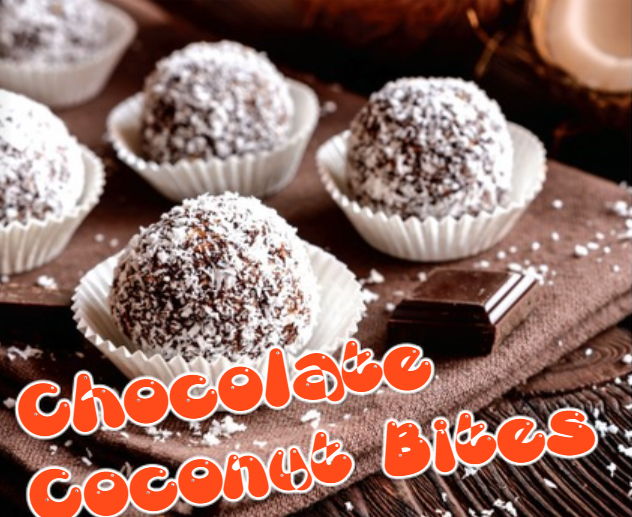Leading Rabbis Call for Daily Study of the Halachot of Shabbat
By Chaim Gold
It was surreal, a scene that will never be forgotten by the thousands who were privileged to be at Newark’s Prudential Center Arena on the Sunday night before Shavuot, for the Dirshu organization’s “Kabbalat Shabbat” event, reaffirming their commitment to meticulous Shabbat observance.
The renowned Rav Shimon Galei, shelit”a, who had come especially from Israel to address, was about to complete his inspiring talk when he suddenly changed tones. Instead of concluding with the traditional wish for the arrival of Mashiah, he began singing. Wearing a radiant smile on his face, microphone in hand, he enthusiastically sang the famous song, “Shaareh shamayaim petah” (“Open the gates of heaven”), pleading to Hashem to open the heavenly gates and shower the Jewish People with blessing.
“I feel that this moment is a tremendous ‘eis ratzon,’ an opportune time when the gates of heaven are wide open, and we can beg Hashem for all our needs!”
He then began singing this song again, with tears glistening in his eyes, as the nearly 15,000 people filling the stadium joined in a thunderous outpouring of emotion.
Watching Rav Shimon singing, one could see the worry lines and wrinkles on his face temporarily disappear. He glowed with genuine joy, leading the assemblage in song and explaining to them that the great merit of Shabbat was opening the gates of Heaven, that Shabbat has the power to save the Jewish Nation from its enemies. The great sage lauded the crowd that had gathered, who had come together to enhance their Shabbat observance by committing to learn the halachot of Shabbat daily and comprehensively. He said that through their devotion to Shabbat, they became the conduit through which Gd’s grace and compassion would descend upon the entire Jewish Nation.
This moment marks just one of many emotional highlights of a truly remarkable event that the Jewish world experienced that night, the first day of the sheloshet yemeh hagbalah (the three days of preparation for Shavuot).
The Dirshu organization – which runs various programs aimed at encouraging and supporting intensive Torah learning – has held numerous large events in stadiums before, but these were generally celebrations of siyumim – the completion of a cycle of Torah study. This event, by contrast, celebrated not a siyum, the completion of a cycle of learning, but rather a kabbalah – a commitment, a pledge. Hundreds of thousands of students took it upon themselves to learn the laws of Shabbat in the framework of Dirshu’s popular and acclaimed Daf HaYomi B’Halacha program, which began studying the halachot of Shabbat on the day before Shavuot. Not coincidentally, this pledge was made just before Shavuot, the holiday celebrating our nation’s acceptance of the Torah at Mount Sinai – for our sages teach that Shabbat observance is equivalent to the observance of the entire Torah.
Neither is it coincidental that the very popular Dirshu Amud HaYomi program is currently studying Masechet Shabbat. Students participating in both programs have the special opportunity to learn the Gemara’s discussions regarding Shabbat observance, followed by the practical halachic conclusions that flow from the Gemara.
Inspiration in Harmony
The Kabbalat Shabbat event was attended by numerous prominent Rosheh Yeshiva, poskim, rabbis and Hassidic rebbes. including: HaRav Malkiel Kotler, shelit”a; HaRav Dovid Schustal, shelit”a; HaRav Reuven Feinstein, shelit”a; Harav Hillel David, shelit”a; HaRav Yaakov Horowitz, shelit”a, Rosh Yeshiva Beis Meir; HaRav Shlomo Feivel Schustal, shelit”a, Rosh Yeshivas Tiferes Yerachmiel; Rav Osher Dovid May, shelit”a, Rosh Kollel of the Passaic Yeshiva Kollel; HaRav Yerachmiel Ungarischer, shelit”a, Rosh Yeshiva Beis Medrash Elyon of Bnei Brak; the Verdaner Rebbe, shelit”a; Rav Meir Meyers, shelit”a, Belzer Dayan in Boro Park; Rav Shlomo Leizer, shelit”a, Sanzer Dayan; Rav Avrohom Spitzer, shelit”a, Skverer Dayan of Lakewood; Rav Shmuel Lichtenstein, shelit”a, Krasna Dayan; Rav Yitzchok Zalman Gips, shelit”a, Rav of Khal Birkas Avrohom; HaRav Moshe Chaim Kahan, shelit”a, Dayan, Beis Medrash Govoha of Lakewood; and HaRav Moshe Zev Feldman, shelit”a, Dayan, Beis Medrash Govoha of Lakewood.
The event featured soul-stirring music, including a new song about Shabbat, “Bo’i Be’shalom,” sung by the Shira Choir. Some of the greatest talents in the Jewish music world were on hand, including Baruch Levine, who sang “Ve’zakeni,” the beautiful prayer recited by women at the time of the Friday afternoon candle lighting, beseeching Hashem for children who will illuminate the world with their Torah and good deeds. Hershy Weinberger was joined by a wunderkind soloist in singing the new song “Tanu Rabbanan,” expressing passionate love for Torah. Zanvil Weinberger sang the timeless words of the Mishnah in Pirkeh Avot (6:1), “He who engages in Torah for its sake earns so many things.” And Naftali Kempeh sang the famous, inspirational Shavuot song, “Kad Yasvin” that describes Hashem’s immense joy as he sees His beloved nation putting aside their personal struggles and hardships in order to focus on Torah learning. The beautiful music helped make the evening unforgettably uplifting, the perfect way to prepare for kabbalat haTorah, the acceptance of the Torah on Shavuot.
Hastening the Redemption
One of the most electrifying addresses delivered that evening was given by HaRav David Ozeri, shelit”a, Rav of the Yad Yosef Torah Center of Brooklyn. Rav Ozeri cited the famous words of the Hafetz Haim, in the introduction to the volume of Mishnah Berurah devoted to the laws of Shabbat, urging communities to hold special study sessions for learning the halachot of Shabbat. The Hafetz Haim assures us that these communal efforts to enhance our knowledge of the halachot of Shabbat will hasten the arrival of our final redemption.
“Dirshu is therefore actually engaged in bringing the geulah [redemption] closer,” Rav Ozeri said, “by ensuring that so many shiurim and so many groups of lomdim [students] are getting together daily to learn hilchos Shabbos. This gathering here today is certainly a gathering that is bringing the geulah closer!”
Rav Yechiel Mechel Steinmetz, Skverer Dayan of Boro Park and one of the senior poskim of America, took note of the heartwarming sense of ahdut (unity) that was palpably felt in the arena.
“We see here Gd-fearing Yidden [Jews] from all walks of life who have come together,” Rav Steinmetz said, noting the presence of hassidim, “Litvishe” Jews (those who follow the Lithuanian tradition), Sephardic Jews, kollel students, and men who work for a living. The Dayan described this assemblage as a replica of our ancestors’ encampment around Mount Sinai in preparation to receive the Torah “as one person, with one heart.” Just as they all came together to accept the Torah, so had this crowd assembled to commit to enhance their Shabbat observance.
Rav Steinmetz exclaimed, “I feel that today we are all here to collectively say, ‘Naaseh V’Nishma’ [‘We will do and we will hear’]!”
“Where Were You?”
Rav Dovid Hofstedter, shelit”a, Nasi of Dirshu, began his remarks by addressing the crowd as “Tayere Heiligeh Mishpachas Dirshu, shelit”a” – “My dear, holy Dirshu family, shelit”a.” He spoke not as the detached figurehead of an organization talking to those under his charge, but rather with sincere love and affection, as a father addressing his cherished family. Every person in the cavernous Prudential Center felt the love expressed by the Nasi. His speech took the form of an earnest conversation among friends, delivering a practical message with readily discernible pain and concern.
“On the one hand,” Rav Hofstedter said, “look at this generation! It is such a beautiful generation! Perhaps in the history of our galus [exile] there has never been a generation where so much Torah is being learned. Torah is being learned across the entire world – in Eretz Yisrael…and outside Eretz Yisrael. In cities and towns literally where until more recently the kol Torah [sound of Torah] has not been heard, there are kollelim. There are yeshivos and Bais Yaakovs in communities the world over, with tens and tens of thousands of talmidim [students].
“All areas of Torah are being learned. In our entire history, there was never so much Talmud Yerushalmi being learned as today. Our generation is producing comprehensive sefarim [books] covering virtually every area of Torah at the highest levels. It is absolutely wonderful! A blessed generation!
“On the other hand… look at the terrible tzaros [troubles] that we have experienced most recently. We are experiencing a difficult tekufah [period] of hester panim [Gd’s concealment]. Is it possible that the tremendous…bounty that Hashem has bestowed upon us has distracted us from our ultimate mission in life? Is it possible that with all the Torah being learned and with all the wonderful, spiritual developments in our time, that we are missing something?”
With great passion and pathos, Rav Hofstedter exclaimed, “Our generation is such a generation of opportunity! There is so much Torah being learned, so much ruchnyius [spirituality], so much good! We have the opportunity to soar in ruchniyus. Yet, there are serious challenges.
“Let us not look back at our lives with regret. Let us not one day regretfully look at the missed, unfulfilled potential! Let us not say we could have been beki’im [experts] in hilchos Shabbos [the laws of Shabbat], we could have kept Shabbos properly without inadvertently transgressing…but we didn’t avail ourselves of the opportunity. Let us not one day have the anguish and regret that ‘I could have been a Shas Yid [Jew proficient in Talmud]…’ Let us not one day look back and say, ‘I could have brought the geulah, I missed the opportunity…’ Let us not be the generation that had so many tzaros and will one day have to answer the question, ‘Where were you? What were you doing when my children were being slaughtered? Where were you when so many children were being lost? Were you too busy enjoying life when the umos ha’olam [nations of the world] were disgracing My Torah?”
With a fiery spark of hope in his eyes, Rav Dovid continued, “Let us rather be the generation of kinyan Torah [acquiring the Torah]… Let us be the generation whose Father welcomes His children with open arms! Let us be the generation that will finally witness yeshuas Yisrael [the Jewish Nation’s salvation] and welcome the goel tzedek [redeemer]!”
With that rousing ending, Rav Hofstedter was about to step down…until something happened that captured the hearts of every person in the audience. Rav Shimon Galei quickly stepped up the podium next to Rav Dovid and, as an appropriate conclusion to Rav Dovid’s address, grabbed Rav Dovid’s hand and began singing the famous Yiddish words of the song composed by Rav Don Segal, begging Hashem to come back home to His children: “Tattele kum shoin aheim! Tattele kum shoin aheim!”
It seemed as if the roof was going to blow off of the stadium as the entire crowd rose to their feet as one, singing with overflowing emotion, “Tattele kum shoin aheim!” – “Our Dear Father, PLEASE COME HOME!”
Learning From the Hafetz Haim
HaRav Yitzchok Sorotzkin, shelit”a, Rosh Yeshiva of Telshe and Mesivta of Lakewood, observed that during periods such as ours, when Am Yisrael endures hardship, people are often told to reinforce their commitment to shemirat halashon – proper speech, refraining from speaking negatively about others.
But while we must certainly always strive to maintain proper standards of speech, Rav Sorotzkin said, this must not be our only response in times of crisis. He cited Rav Matisyahu Salomon as observing that in the letters written by the Hafetz Haim during difficult periods that befell the Jews in his lifetime, he almost always attributed the hardships to deficiencies in Shabbat observance and in Torah learning. Thus, Rav Sorotzkin declared, in our times, when the Jewish Nation is beset by grave dangers and crises, we must work to raise our standards of Shabbat observance and increase our Torah study.
The audience was then shown video recordings of Torah sages both in Israel and in America urging everyone to undertake the project of learning the laws of Shabbat. A powerful message resonated from Eretz Yisrael during the recent nesius meeting of the Daf HaYomi B’Halacha program with the Gedolei Yisrael of the Yeshiva, Chasssidic and Sefardic communities in Bnei Brak.
Experiencing the Delight of Shabbat
The renowned maggid (lecturer) HaRav Shimon Spitzer, shelit”a, referenced the famous story told in the Gemara about a gentile who approached Hillel and promised to convert if Hillel could teach him the entire Torah succinctly, during the time he stood on one foot. Hillel replied, “That which you dislike, do not do to your fellow. The rest is commentary – go learn it.”
Rav Spitzer asked if this really can be considered “the entire Torah.” Aren’t there 613 mitzvot and numerous details which we are required to observe?
Rav Spitzer answered that there are certain “foundational” mitzvot which lead to the observance of the other mitzvot. Treating other people the way we wish to be treated is one such mitzvah, Rav Spitzer said, and another is Shabbat. The mitzvah of Shabbat, he explained, encompasses all other mitzvot, which is why a person who observes Shabbat is considered as though observes the entire Torah, while one who desecrates Shabbat is considered as though he does not believe in the Torah.
Rav Spitzer urged the assemblage to experience the special ta’am (“flavor”) of Shabbat, to feel the spiritual ta’anug – delight – that Shabbat brings.
“This ta’anug,” he said, “can be felt when someone devotes time to learning hilchos Shabbos.”
Another highlight occurred at the very end of the event with the arrival of the venerated Skulener Rebbe of Boro Park, Rav Yeshaya Yaakov Portugal, shelit”a, and the Rebbe of Toldos Yehuda Stutchin, Rav Mordechai Zilber, shelit”a. The Skulener Rebbe declared, “Shema Yisrael,” the pronouncement of kabbalat ol Malchut Shamayim (accepting Gd’s Kingship), as the Stutchiner Rebbe looked on. The entire assemblage thundered after him, in a roaring acceptance of ol Malchut Shamayim. He then said, “Hashem Hu Elokim” (“Hashem is Gd”) seven times, declaring our emunah in Hashem. What an appropriate culmination to a night that was completely devoted to Shabbat, the foundation of our emunah!
To join Daf HaYomi B’Halacha and/or Amud HaYomi, please contact Dirshu at info@dirshunj.org or at 1-888-5Dirshu.











